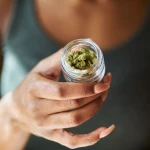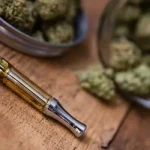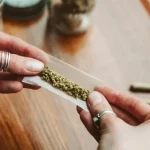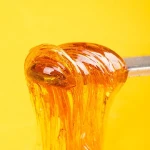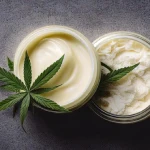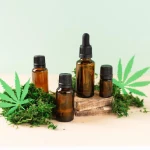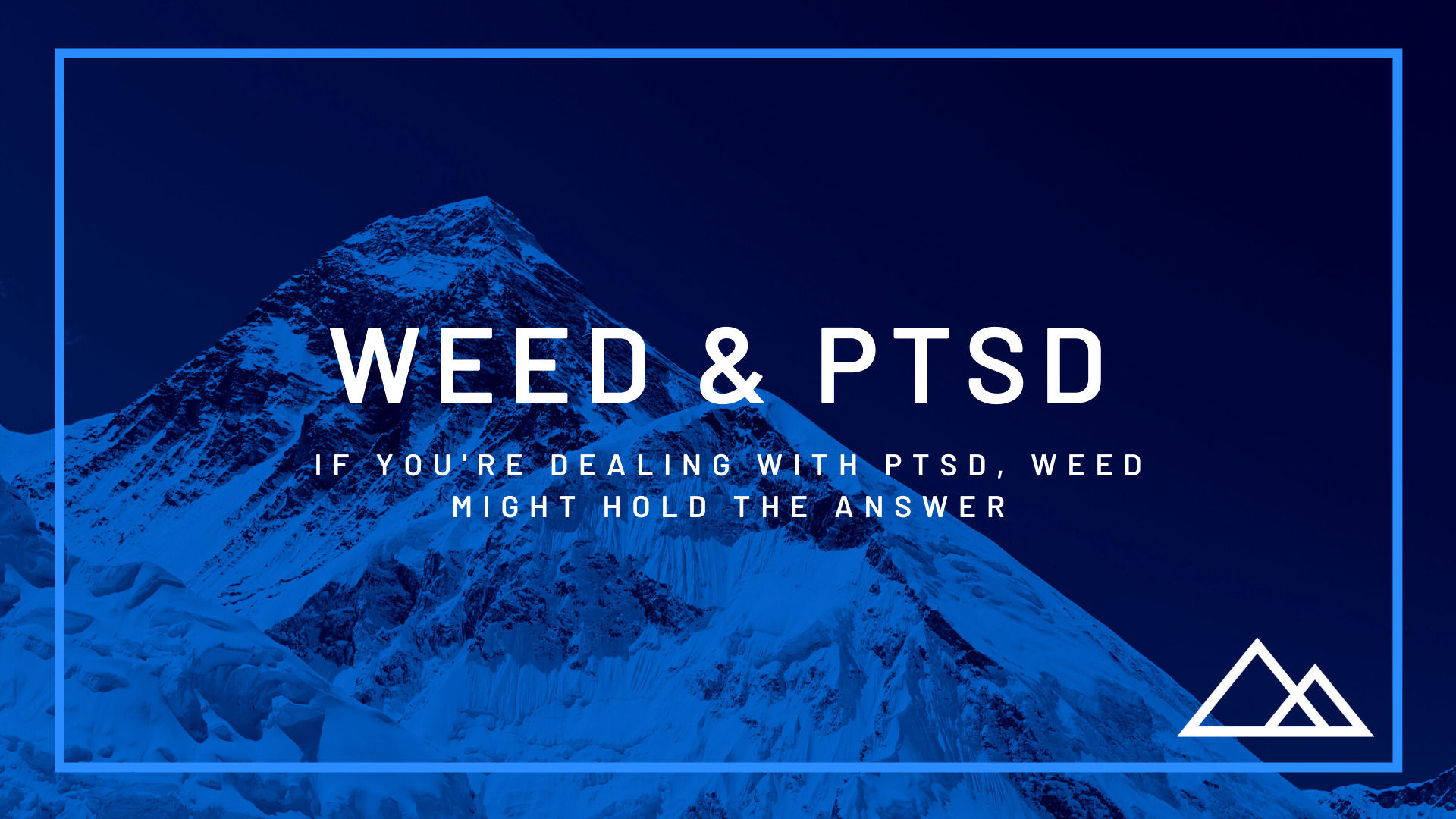You’ve probably seen the non-stop arguing amongst politicians, soccer moms, journalists, cops, doctors, activists, and more–all hitting you with a tidal wave of melodrama and exaggeration until you don’t know what to believe! Medical marijuana has been a controversial hot topic for years, ever since the Controlled Substance Act passed in 1970 and labeled it a “highly dangerous and addictive” drug. The worst part is, this leaves some of the most vulnerable Americans without an opportunity to make informed choices about their healthcare options based on scientific proof.
Both recreational and medical marijuana users are familiar with (and very much value) the calming effects of certain strains of bud. Many people turn to cannabis over pharmaceutical drugs to treat a wide variety of health conditions ranging from anxiety to sleep disorders. There is one demographic in particular taking more and more interested in the benefits of alternative medicine — veterans. This group of Americans has seen one of the biggest increases in medical marijuana use in recent years due to their desperate search for alternatives to opiates and antidepressants to combat PTSD.
Let’s start with the basics: what is PTSD?
Post-traumatic stress disorder (PTSD) is a mental health condition found in people who have experienced a traumatic event or series of events. The most widely known demographic experiencing this condition is military veterans, although more recent research has shown that at-risk youth in urban areas, women who have experienced sexual assault, and civilians in war-torn regions are highly vulnerable to PTSD as well. The nature of these traumas varies widely, but symptoms of post-traumatic stress much more consistent: nervous sweating, shaky hands, and heightened heart rate. These responses can be triggered by minor daily encounters like loud noises, claustrophobic and crowded places, and certain social environments.
Your body has a whole host of reactions when you find yourself in danger. These automatic reactions prepare you to either fight for your life or run away to save yourself. This isn’t always a bad thing–these mechanisms can actually prove life-saving in a dangerous situation! But too much of a good thing can prove harmful over time. PTSD is an excessive expression of this normal fight-or-flight response.
Symptoms of clinically diagnosed PTSD can include:
- Re-living the traumatic event through nightmares, intrusive thoughts, flashbacks, etc
- Staying away from activities that remind the person of the trauma, including emotions and places
- Consistent anxiety and being “on edge” constantly, that can show up as being jumpy or skittish, having sudden angry outbursts, insomnia, irritability, or self-destructive habits
- Adverse changes in mood and thinking that can include depression, anti-social behavior, difficulty focusing, mood swings, and apathy
You might be diagnosed with PTSD if these symptoms continue for a month or more, and it’s good to keep in mind that not every person experiencing PTSD will encounter every symptom. Symptoms like this can also take months or even years to develop after the traumatic experience. Out of every 100 people in the United States, about 7-8 will experience PTSD at some point in their lives. During any given year, about eight million Americans have PTSD.
As with many other mental health conditions, PTSD is associated with higher rates of substance abuse, especially among veterans. Those suffering from the condition often turn to alcohol, tobacco, and drugs (prescription or otherwise) to help them handle their symptoms. PTSD has also been closely related to suicide risk. Tragically, an estimated 22 veterans are lost to suicide on a daily basis, and many prescription drugs used to help combat PTSD have unfortunate side effects and addictive potential of their own. In recent years, using weed for PTSD has rapidly gained popularity as a natural alternative to prescription drugs.
The question is, can you really use weed for PTSD?
The use of medical cannabis to treat PTSD is a controversial idea but as the opioid epidemic worsens, many military veterans and other PTSD sufferers have turned to marijuana for help. The anecdotal support for cannabis for PTSD is there–but why is it hard to find scientific studies centered around veterans?
Since marijuana was considered a dangerous and illegal substance for so long, scientists are only just beginning official research into the world of cannabinoid benefits. Researchers have long had restrictions on performing extensive studies comparing medical cannabis to prescription drugs. Even though many states have legalized marijuana, it is still a Schedule I drug under federal law. This means that the Department of Veterans Affairs (VA), a federal organization, has not explored or supported these potential new and safer ways to treat veterans with a wide array of mental health problems.
So here we are today: even though medical cannabis is now legal in the majority of US states, veterans still find themselves trapped in a “catch 22”. VA physicians are forbidden from testing or even casually recommending marijuana products as potential options for veteran patients. This is especially frustrating when you consider that most of the very limited weed for PTSD studies have found that while results have proved promising, more solid research and scientific inquiry is necessary to come to helpful and concrete conclusions.
But wait, there’s good news! In recent years, as the world has opened its mind more and more to the possibilities of medical marijuana, there have been many exciting steps forward in scientific research. A study published just in 2019 found that cannabis is already helping people affected with PTSD to lessen symptoms of depression and suicidal thoughts. Researchers from the British Columbia Centre on Substance Use (BCCSU) and the University of British Colombia found that people with PTSD who medicated with cannabis reported far lower rates of intense depression and thoughts of suicide than those who did not use cannabis over the course of a year. In the paper published in the Journal of Psychopharmacology, researchers wrote that these findings are initial proof “that cannabis use may contribute to reducing the association between post-traumatic stress disorder and severe depressive and suicidal states.” This exciting report is the first to show evidence of the connection between PTSD, cannabis use, and severe mental health changes in a study with a large sample size.
As the American public and legislators begin to open their minds, more scientific studies can be funded. This promising research will hopefully someday lead to widespread access to these options, and as we learn more about the benefits of weed for PTSD, medical professionals will be able to recommend alternatives to patients beyond pharmaceutical drugs.
How to access cannabis for PTSD
Fortunately for many PTSD sufferers, medical marijuana has been taking the nation by storm in recent years and as of January 2020, weed for PTSD is approved for medical use in 35 US states and territories. You can find the full list HERE!
If you live in one of these places and are dealing with PTSD–great news! You can look into getting a medical marijuana card in order to access weed for PTSD.
For a resident of New Mexico, here are the steps to getting your medical marijuana card:
- Talk to a doctor. You will need to get a signed doctor’s statement from a physician licensed to practice in NM. Be sure to have your medical records on hand. At your appointment, the doctor will ask you questions about your condition to determine if medical marijuana is a good option for your case. If your doctor doesn’t approve of medical cannabis as medicine regardless of the state law, you can also book an appointment at many of the other clinics and doctor’s offices around the state. Many facilities specialize in consultations for using weed for PTSD and other disorders.
- Submit your online application. Once you have your official physician’s note confirming that you are a valid patient, you can register online with the New Mexico Department of Health (NMDOH). Submit the application to receive your MMJ card in the mail within 7-10 business days.
Hey, that was actually easier than you thought, wasn’t it?
So once you have your medical marijuana card — what’s the best way to use weed for PTSD?
The first thing that’s important to understand is the difference between THC and CBD cannabis strains. If you’re looking for something for daytime use, high-CBD strains are preferable due to their mood-stabilizing properties. For helping with restful sleep at night, turn to high-THC marijuana. A good rule of thumb is that the higher the CBD content, the less intense the high will be. Pure CBD strains with less than 1% THC will not provide any high at all, in fact!
Even with these guidelines, there is still an overwhelming number of choices when you’re deciding which strain of bud for PTSD is right for you. Though more research is necessary, there are a number of strains that are widely accepted as the most successful in managing symptoms of PTSD.
Here are the top 5:
- Blue Dream — This is one of the most popular and widely available hybrid strains across the country in states that have legalized weed. For PTSD, is known for having a significant effect on uplifting your mood and providing a euphoric, long-lasting high. It has a high THC content between 17-24%, with a low CBD content of 0.1-0.2%, and provides soothing full-body relaxation and can help ease you into social situations as well!
- Headband — Headband is an indica-dominant hybrid with high THC content (around 20%) great for relaxing the mind. The benefit of this strain of weed for PTSD is that it can help you skip the sleep stage where most dreams (and nightmares) manifest, and go to a deep and dreamless sleep instead. Because of this, be sure to use this strain later in the day, preferably before bed.
- Pineapple Express — This smooth and balanced strain comes with a clear-headed feeling which makes it a good option if you want to be out and social, but are feeling symptoms of anxiety. Pineapple Express is a sativa-dominant hybrid, and especially good for creative types looking to get their inspiration and creativity flowing. Its high THC content gives mood-boosting effects as well.
- ACDC — Much like Pineapple Express, ACDC is a great option for the daytime when you want to relax, but be focused and productive as well. With a high-CBD 20:1 ratio, you can have all the calming benefits of the strain without the high of a THC-heavy strain. This is a good beginner cannabis for PTSD sufferers who are new to the world of weed for PTSD.
- Master Kush — This potent strain is not ideal for beginners, but if you have been using bud for PTSD and are looking for help with insomnia this can be a huge help. Master Kush’s euphoria and ecstatic feelings will have you floating off happily to sleep with a 20% THC content.
Remember that regardless of marijuana’s legal status where you live, you should always consult with a medical professional before using weed for PTSD and other conditions. If you are not sure which strain is right for you, don’t be afraid to ask your local budtender what they recommend!
We’ve only just begun to explore the healing possibilities of cannabis for PTSD, and for many other health conditions. Scientists have begun to uncover exciting new properties of cannabis-based treatments, and we look forward to a future where we more fully understand how they fit into treatments for PTSD and other mental health conditions! In the meantime, we hope you find this information helpful in making your own healthcare choices that are best for you and your body.
Want to see what we have to offer at Everest Apothecary? Check out our online menu HERE.




